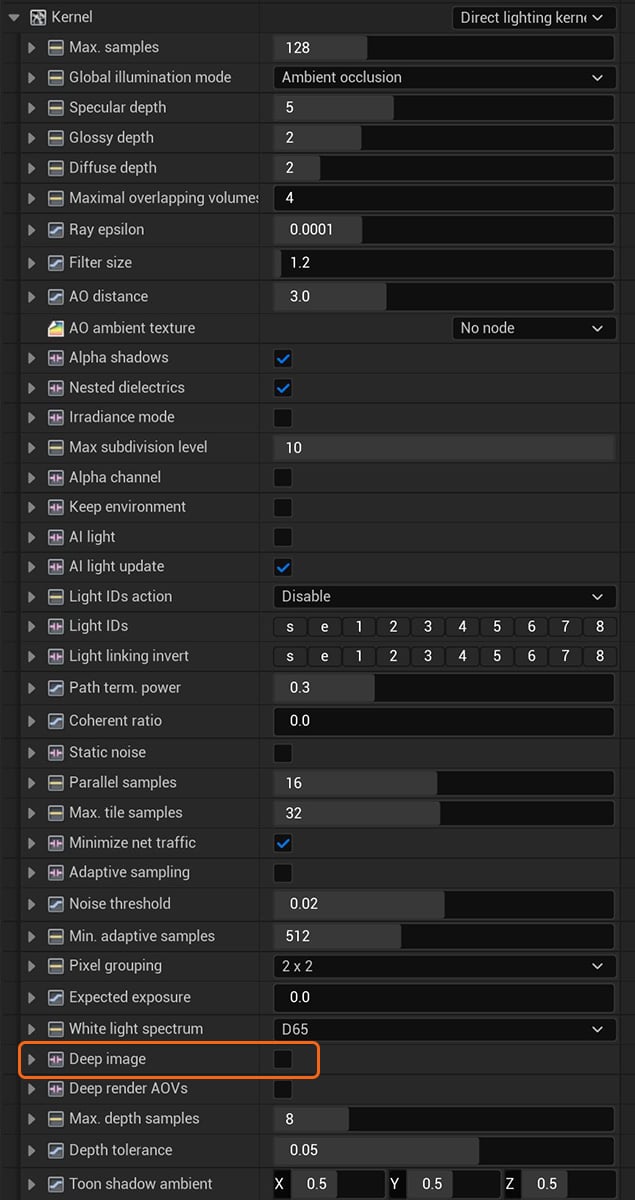
Deep Image rendering improves the compositing workflow by storing Z-depth with samples. It works best in scenarios where traditional compositing fails, like masking out overlapping objects, working with images that have depth-of-field or motion blur, or compositing footage in rendered volumes.
Most major compositing applications now support Deep ImageRenders frames with multiple depth samples in addition to typical color and opacity channels. rendering. The disadvantage of Deep Image rendering is the large amounts of memory it requires to render and store deep images. The standard output format is OpenEXR.
You can enable Deep Image rendering in the Octane Render Target Actor, from the Kernel dropdown in the Details panel.

Figure 1: Deep Image option
Deep Image - Enables Deep Image rendering for deep image compositing.
Deep Render PassesRender passes allow a rendered frame to be further broken down beyond the capabilities of Render Layers. Render Passes vary among render engines but typically they allow an image to be separated into its fundamental visual components such as diffuse, ambient, specular, etc.. - Includes render passes in deep pixel rendering.
Max. Depth Samples - Used when Deep Image rendering is enabled. This sets the maximum number of depth samples per pixel.
Depth Tolerance - Used when Deep Image rendering is enabled, this parameter merges depth samples whose relative depth difference falls below this tolerance value.